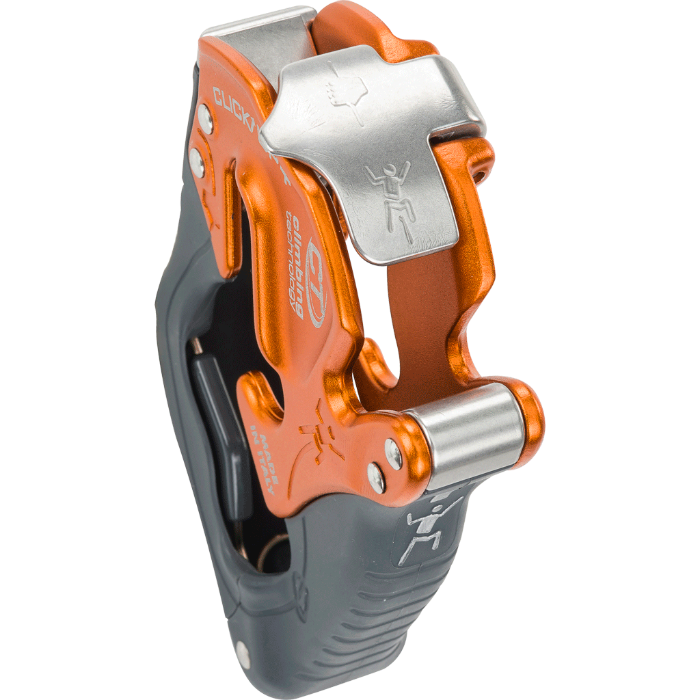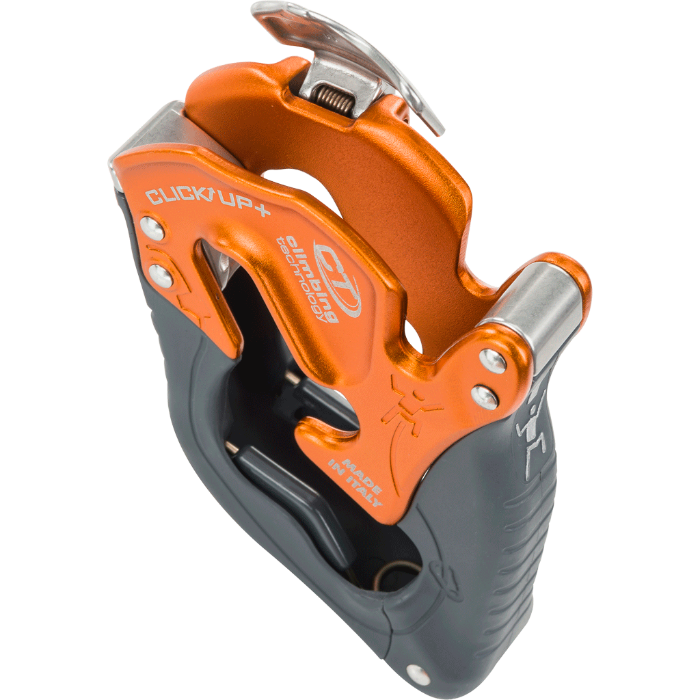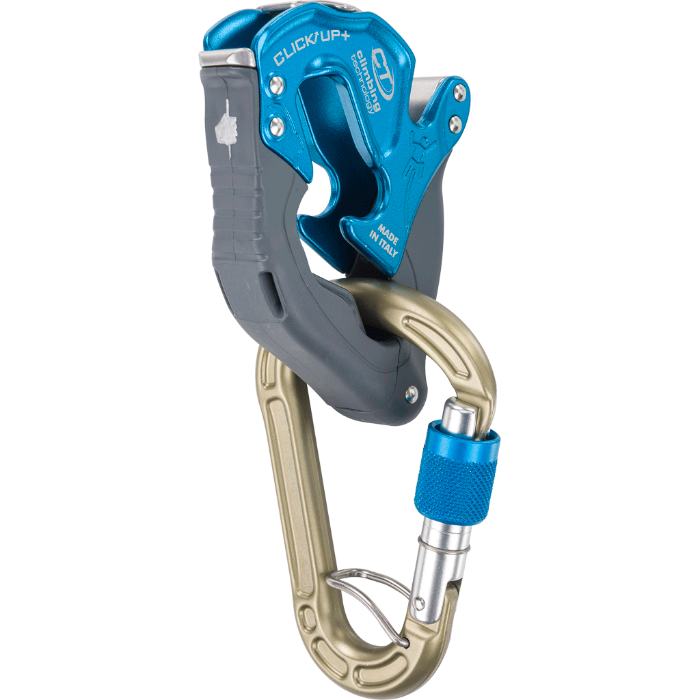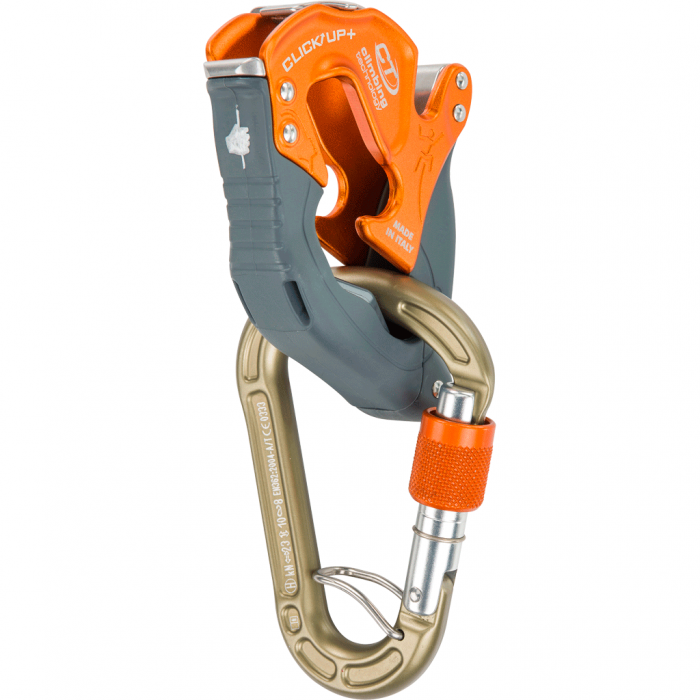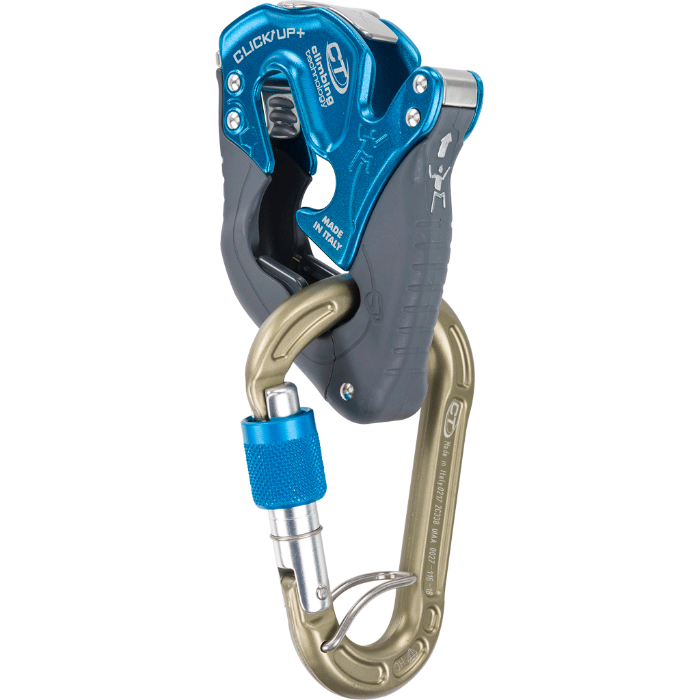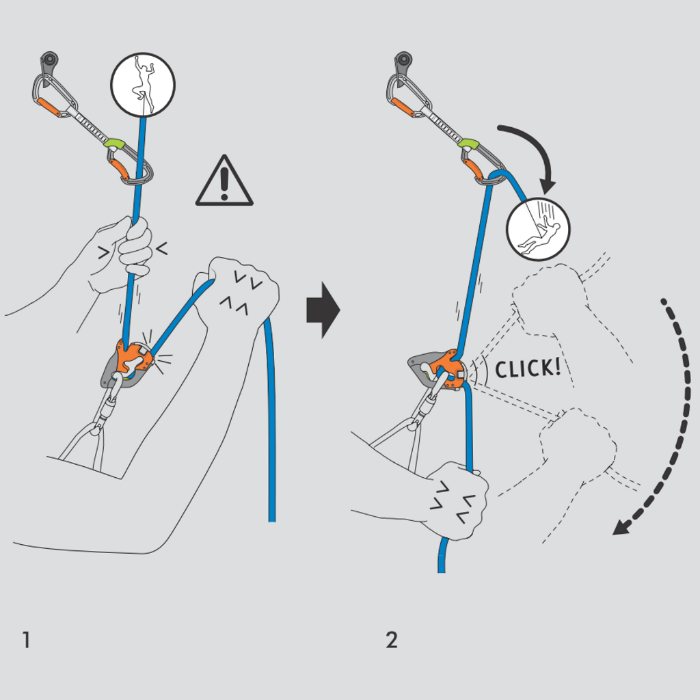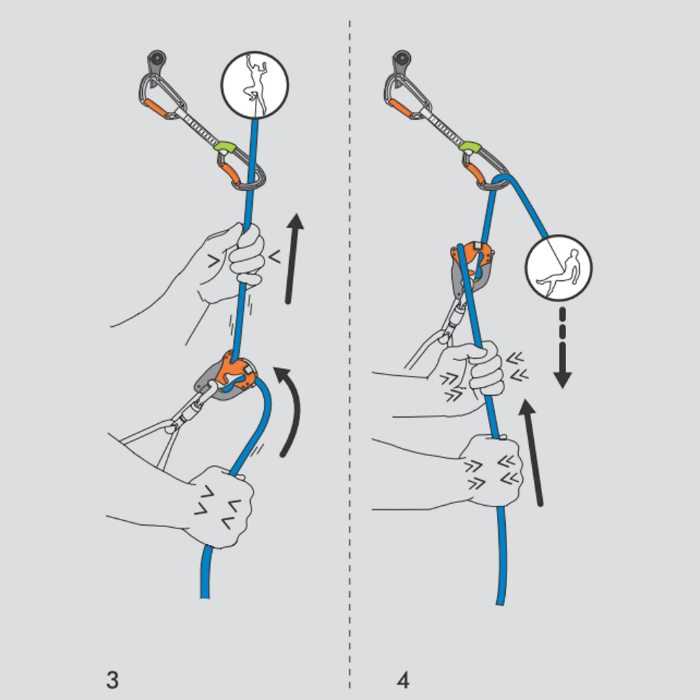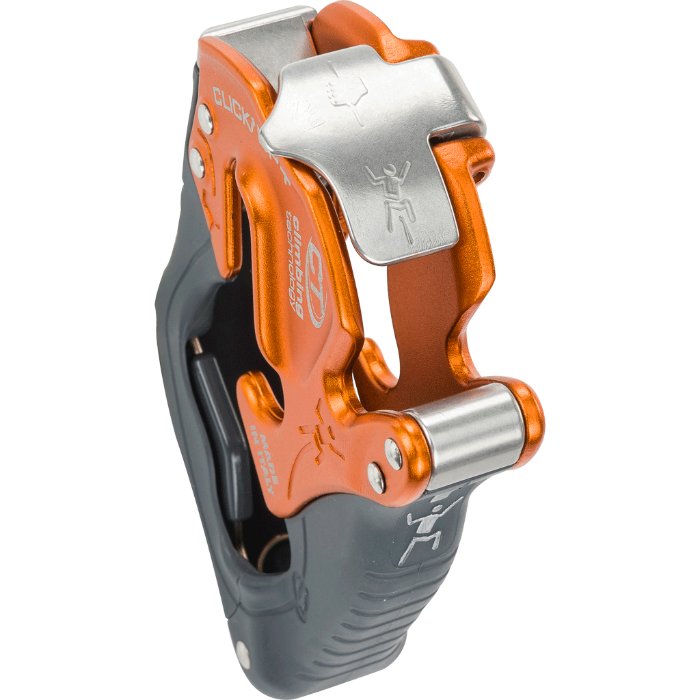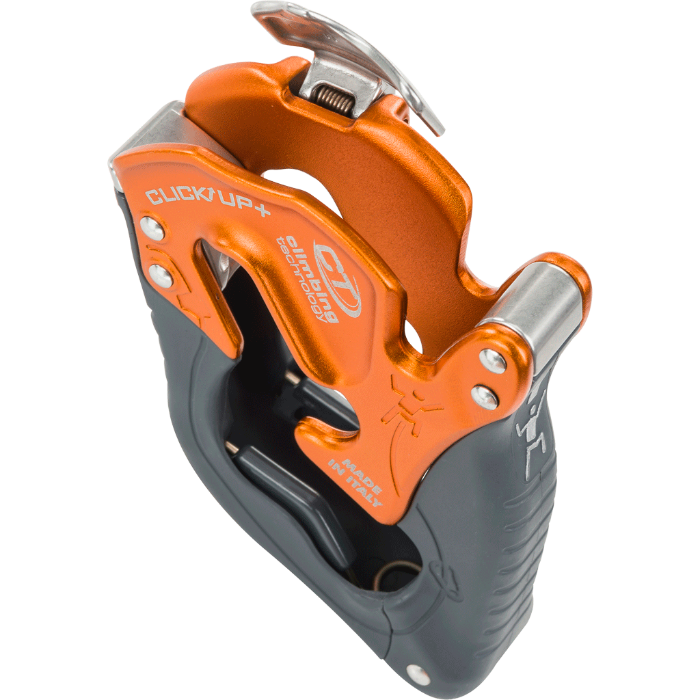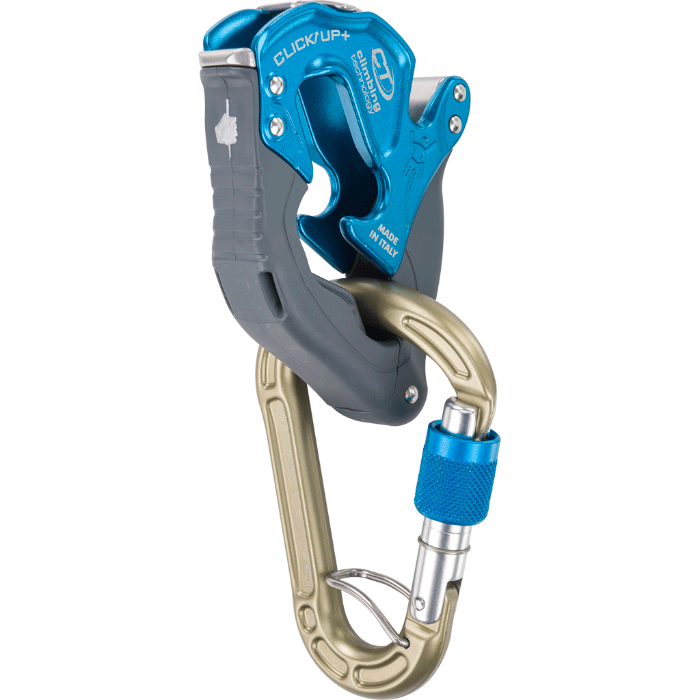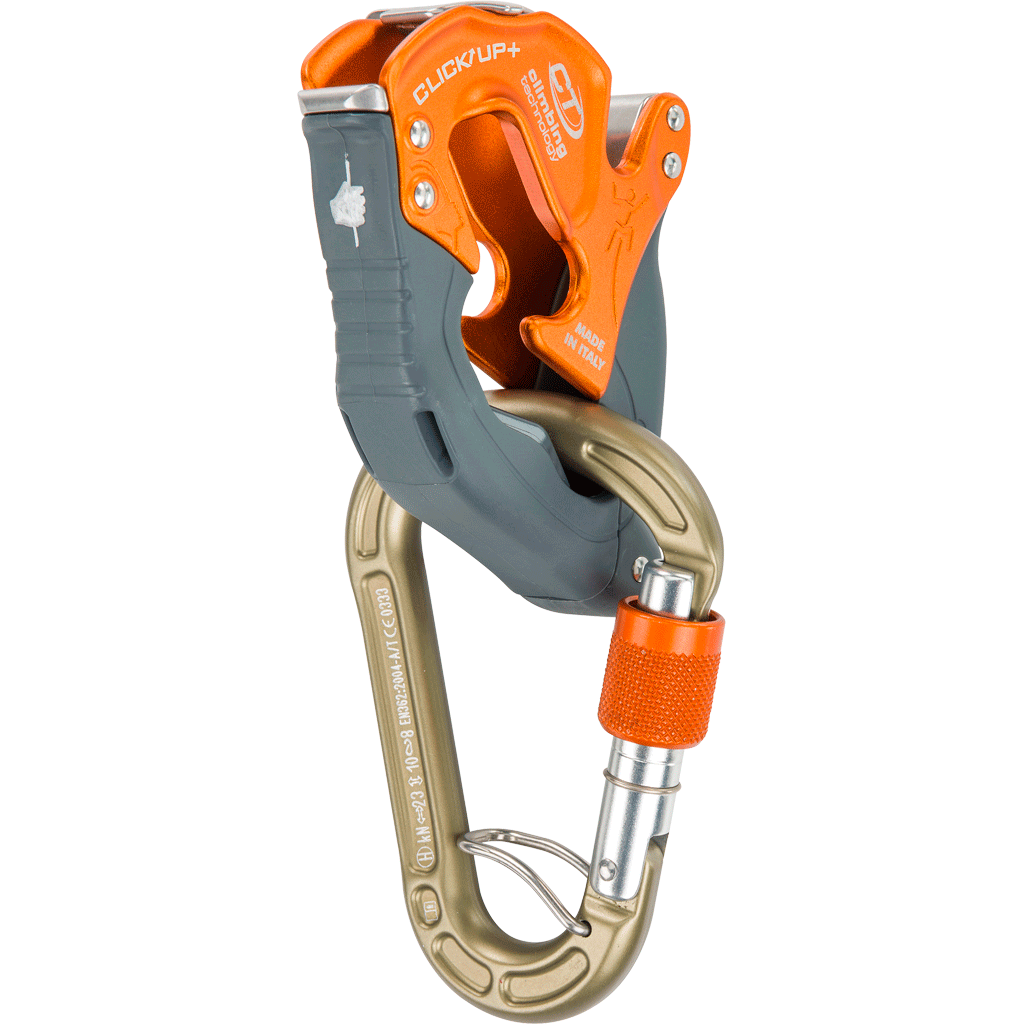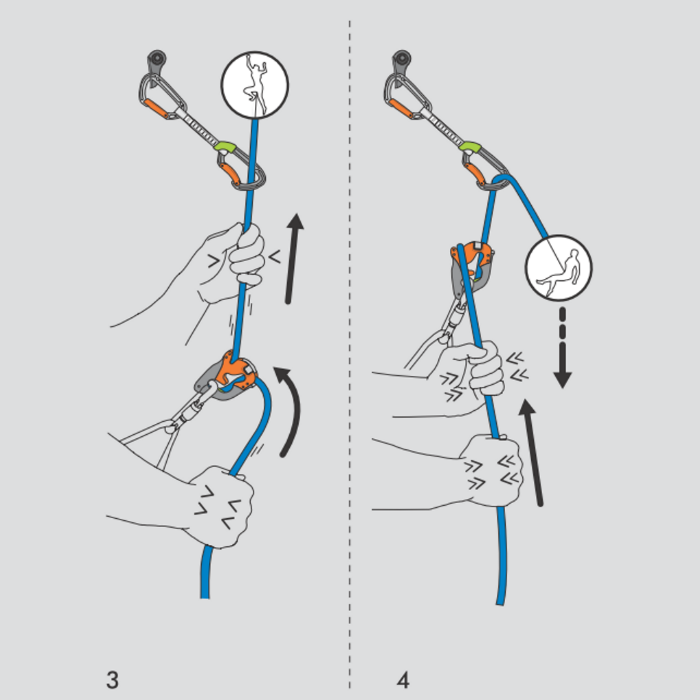How to use Click Up correctly and safely in details with instructional pictures.
Click Up +
Description
CLICK UP + is an innovative manual braking belay device, evolution of the well-established CLICK UP model, that has been available to the public for seven years now. Designed specifically for indoor and crag climbing, it can be used with all dynamic single ropes in the 8.5 to 11 mm Ø range. Lightweight and compact, it allows for belaying a leader or a top-roping climber, both hands handling the rope.
This is what makes the new CLICK UP really ‘+’:
- more effective in paying out rope, a process that is now quick and smooth (Fig. 3), thanks to the new geometry of the body and to a new carabiner holding layout (patent pending);
- more comfortable for top-rope belays, especially when used with indoor climbing ropes, thanks to the new geometry of the side plates;
- even safer, thanks to the V-Proof System (patent pending) that reduces the chance of error due to incorrect handling of the rope while braking (Fig. 1-2);
- more ergonomic, thanks to the new shape of the outer body.
Like the previous model:
- it allows the belayer to arrest a fall simply holding the free end of the rope with the braking hand;
- it allows the belayer to lower the partner off by applying a slight pressure over the device, while keeping under tension the free end of the rope with the braking hand;
- it ensures effective belaying even if the rope is incorrectly installed in the device (the strands of the rope are inverted) thanks to specific V-shaped, tapered, friction notches (Fig. 4).
V-PROOF SYSTEM
When belaying, some processes are critical (like taking-in and paying-out rope to the leader, or taking-in slack during top-roping) and, in the event of a fall, require the V-shaped angle of separation between the two sections of the rope to be maintained. A reduction in the value of this angle can affect the proper functioning of the device when locking the rope.
The V-Proof System, featured on CLICK UP +, reduces the chance of error due to an incorrect reduction of the V-angle between the two strands of the rope.
It consists of a mobile partition that facilitates the activation of the assisted-braking system. If during the fall of the climber the hand side of the rope comes into contact with the partition (Fig. 1), this pressure contributes to the rotation of the device and to the consequent locking on the rope (Fig. 2).
Caution: read carefully the device instructions before use.
CLICK UP + is supplied and must be used together with the specific HMS carabiner CONCEPT SGL HC, with wear-resistant anodizing and ACL system that prevents the possibility of minor-axis cross-loading.
CLICK UP + is an innovative manual braking belay device, evolution of the well-established CLICK UP model, that has been available to the public for seven years now. Designed specifically for indoor and crag climbing, it can be used with all dynamic single ropes in the 8.5 to 11 mm Ø range. Lightweight and compact, it allows for belaying a leader or a top-roping climber, both hands handling the rope.
This is what makes the new CLICK UP really ‘+’:
- more...
Retail price
This Product is Hard to Find.
We don’t know where you can buy this item online in the US. We’ll continue to check all the major retailers and will update this page as soon as we find one.
If you know where to find this online in the US, let us know, and we’ll add the link.
Device Type  |
Brake Assist - Tube |
Weight (g)  |
110 g |
Belay Brake Assist  |
Yes |
| Rope Options | 1 rope only |
Guide Mode  |
No guide mode |
Teeth  |
No |
Rope Range (mm)  | 8.5 mm - 11.0 mm |
Certification  |
EN |
No reviews yet.
The ClickUp + is an innovative passive assist braking device with a reasonably large following in Europe. We have literally never seen one being used in the US, although that is no reason you shouldn't try it. While it has some solid safety features that are certainly recommendable, we also feel that functionally it is a bit complicated and difficult to master, not to mention a bit expensive compared to competitors.
Overall this is a bit of a disappointment. The feeding mechanism is too sensitive and has been implemented to avoid a problem that the vast majority of climbers would never experience. It is a safer device for top-roping and for belaying with inexperienced climbers, but most people who use the old Click Up will find the new version frustrating. You can adapt your belaying style to make it work almost as well as the original, but you shouldn't have to do that. We are pleased to say though that the brilliant original Click Up is still available!


